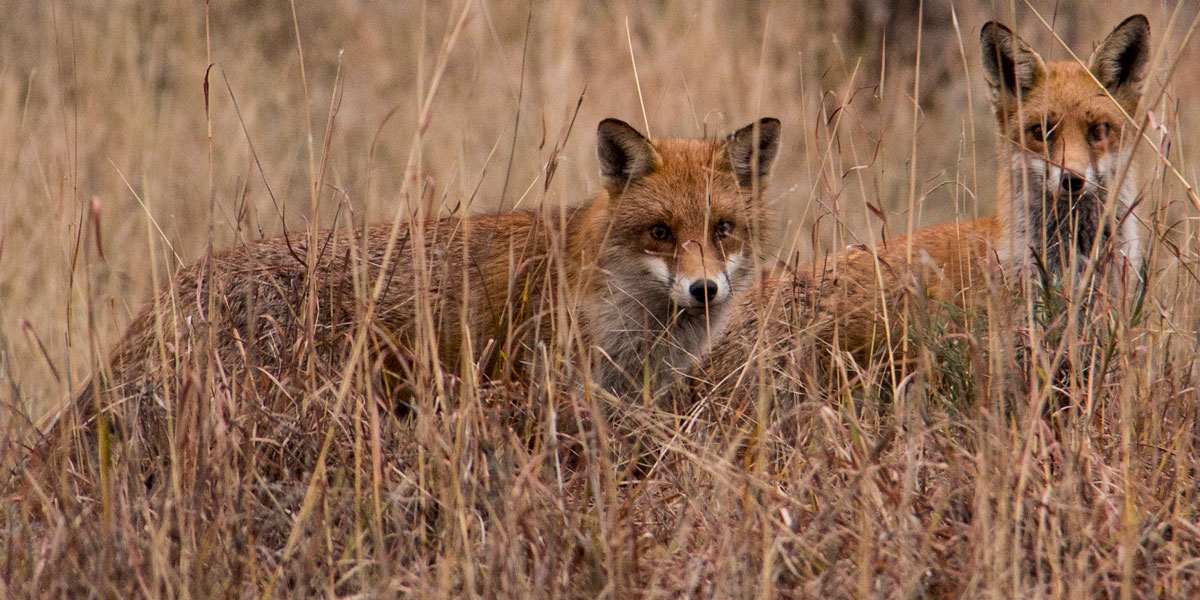Putting a dent in feral cat and fox numbers, one plan at a time
Communities across Australia trying to come to grips with feral cats and foxes will be better equipped with the release of two new planning guides by the Centre for Invasive Species Solutions.
“Recent research shows that feral cats and foxes kill and eat 697 million birds, 510 million reptiles, 1.4 billion mammals and well over 1.1 billion invertebrates every year”, said Ms Gillian Basnett, National Feral Cat and Fox Management Coordinator with the Centre for Invasive Species Solutions
“Their populations are huge: it’s estimated that the number of feral cats ranges seasonally from 1.4 and 5.6 million, and the number of foxes is steady at about 1.7 million. Fox and cat numbers vary across landscapes, with higher numbers in agricultural, peri urban and urban areas where there is more food.

Feral cats kill huge numbers of native animals and spread disease to other animals. Credit Tony Buckmaster.
“These invasive animals threaten our native animals with extinction: at least 140 species are threatened by feral cats; 95 species are threatened by foxes”, said Ms Basnett.
“They also spread disease: feral cats spread toxoplasmosis which can infect any animal or bird, it doesn’t discriminate between wallabies, bandicoots or sheep.
“Together with another disease, Sarcocystis, toxoplasmosis spread by feral cats is estimated to cost farmers more than $12 million a year. Throw in predation by foxes and you add a further $28 million in costs a year.”

Foxes threaten 95 native species with extinction. Credit Ballard.
Ms Basnett has found that there is huge community interest in controlling feral cats and foxes but often the first question she is asked is, ‘what can we do about it?’.
The new Planning Guide for Feral Cat Management in Australia and its companion, the Planning Guide for Fox Management in Australia have been written to help land managers, community groups, pest control professional, biosecurity organisations and others ask the right questions and find the right answers that suit their circumstances and resources.
“Many people are daunted by planning — it’s a bit dull, it’s a bit dry, it seems too complex — and they just want to hook in and start controlling feral cats and foxes from day one”, said Ms Basnett.
“A useful plan doesn’t need to be long and complicated: a map to get you started, a list of everyone involved, details about why you want to control the pests, and a calendar of who is doing what, when.”
“What I would say, is that you want your plan to be purposeful: to quote Dr Peter Fleming from NSW Department of Primary Industries, who spoke at a recent strategic planning forum we hosted, “You don’t want to just do something, you want to do something useful and if you fail to plan, you plan to fail”.
The new planning guides provide a framework for people to make decisions and to select management options that suit their circumstances.
“People might want to bait, shoot and trap, or invest in exclusion fencing, or habitat improvements and rabbit control. It depends on what they can commit to and what works for them”, said Ms Basnett.
People interested in ordering copies of the new planning guide can do so using our online order form. Also available to help communities record pest animal sightings and control activities are the free FeralCatScan and FoxScan apps




